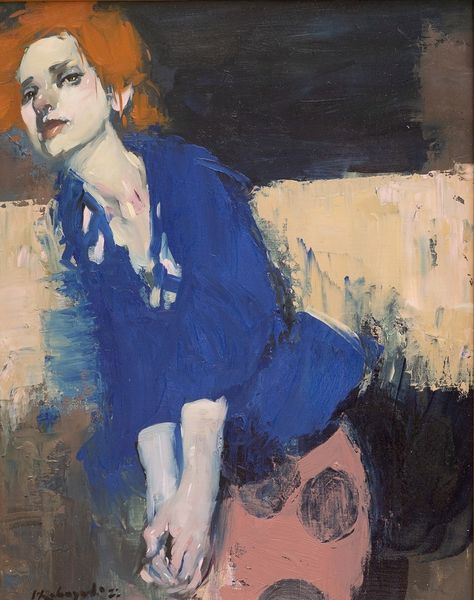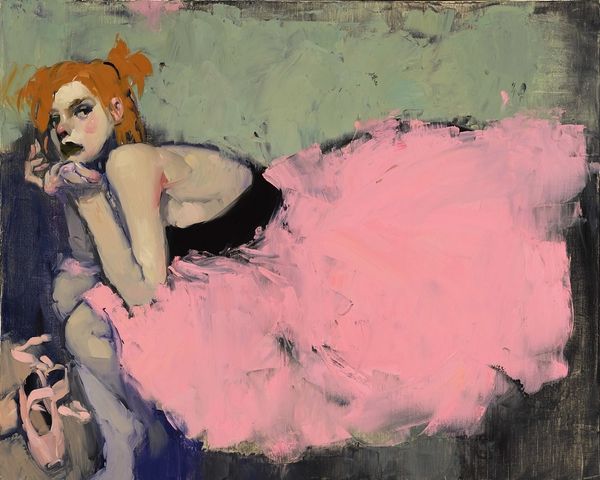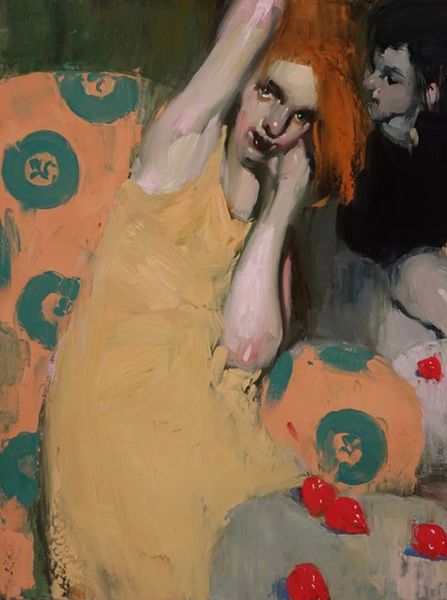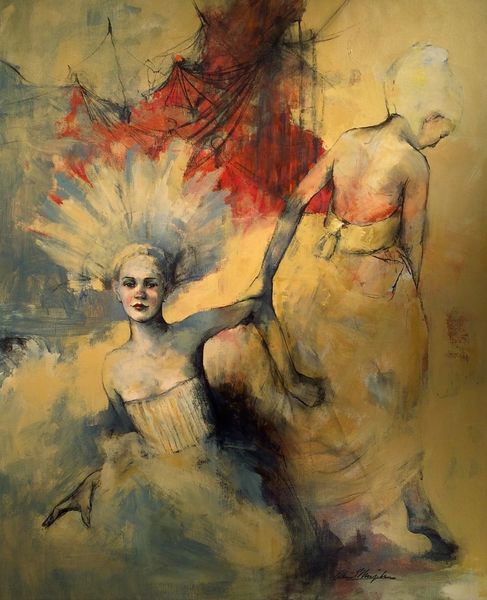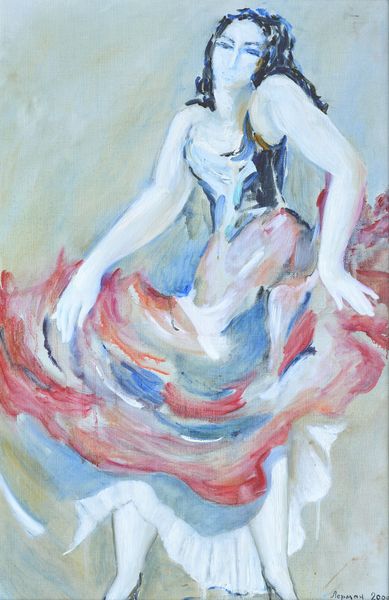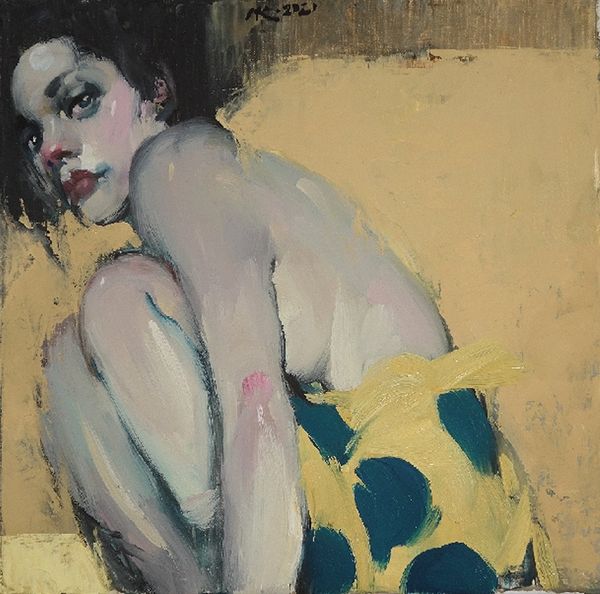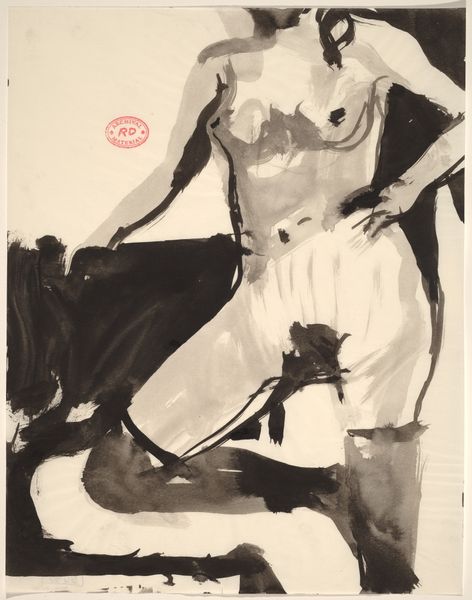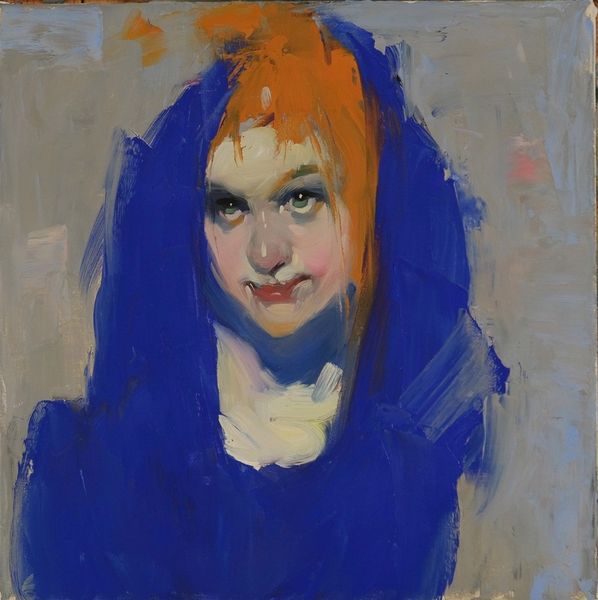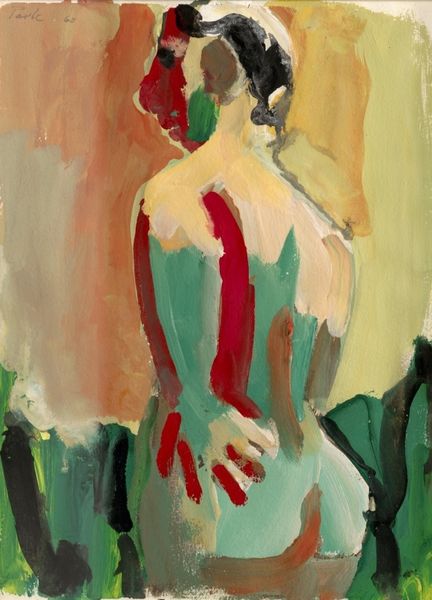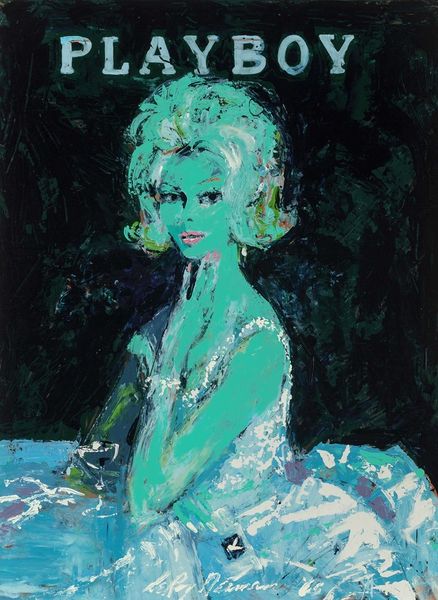
painting, oil-paint
#
portrait
#
figurative
#
painting
#
oil-paint
#
figuration
#
oil painting
#
neo expressionist
#
neo-expressionism
#
expressionism
#
portrait art
#
expressionist
Copyright: Modern Artists: Artvee
Curator: What a striking image! Before us is an oil painting entitled "The Dancer Takes Flight," attributed to Milt Kobayashi. Its dramatic contrasts are immediately captivating. What are your first impressions? Editor: It feels incredibly theatrical. The stark contrast between the figure bathed in light and that abyss of dark space surrounding her gives a sense of drama, a lone figure caught in a moment. Is she really dancing, or falling? It's hard to tell. Curator: I agree; there’s a real sense of dynamism at play, amplified by Kobayashi's expressive brushwork. The orange dress against the dark backdrop serves a crucial structural role, defining the negative space and shaping our understanding of the figure's movement, as though she might actually be tumbling backward. Editor: Do you think the intensity of color has any significance? The almost aggressive use of orange clashes vibrantly with the pastel blue-pink skin, lending this expressionist edge that suggests emotional turbulence. Curator: Certainly. Kobayashi’s neo-expressionist style seems particularly suited to portray internal conflict through this manipulation of color and form. But to understand the piece better, we might also consider the political function of portraiture, even abstract figuration. Was it designed to present certain kinds of bodies or narratives to an audience that were, in and of themselves, expressive or political? What are the cultural touchpoints informing this presentation? Editor: An important perspective. Perhaps Kobayashi is also playing with the tropes and visual languages, even challenging conventional representation through the lens of neo-expressionism. As for the title, it is, if anything, ironic; while her closed eyes and relaxed posture hint at transcendence or escape, she’s trapped in a visually anxious tableau. Curator: Indeed, it's a compelling paradox that amplifies the overall experience of ambiguity. The dancer takes flight, yet seems completely bound in her expression, in her own representation. Editor: It offers more questions than answers and I will keep looking at the oil-painting in light of the dialogue. Curator: And hopefully, our discussion will inspire more inquiries that make experiencing the visual language just as enticing.
Comments
No comments
Be the first to comment and join the conversation on the ultimate creative platform.
